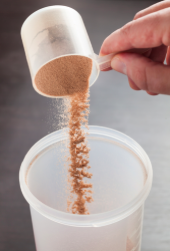[fusion_builder_container hundred_percent=”no” equal_height_columns=”no” menu_anchor=”” hide_on_mobile=”small-visibility,medium-visibility,large-visibility” class=”” id=”” background_color=”” background_image=”” background_position=”center center” background_repeat=”no-repeat” fade=”no” background_parallax=”none” parallax_speed=”0.3″ video_mp4=”” video_webm=”” video_ogv=”” video_url=”” video_aspect_ratio=”16:9″ video_loop=”yes” video_mute=”yes” overlay_color=”” video_preview_image=”” border_size=”” border_color=”” border_style=”solid” padding_top=”” padding_bottom=”” padding_left=”” padding_right=””][fusion_builder_row][fusion_builder_column type=”1_1″ layout=”1_1″ background_position=”left top” background_color=”” border_size=”” border_color=”” border_style=”solid” border_position=”all” spacing=”yes” background_image=”” background_repeat=”no-repeat” padding=”” margin_top=”0px” margin_bottom=”0px” class=”” id=”” animation_type=”” animation_speed=”0.3″ animation_direction=”left” hide_on_mobile=”small-visibility,medium-visibility,large-visibility” center_content=”no” last=”no” min_height=”” hover_type=”none” link=””][fusion_text]
by David Robson
Power proteins: which are best?
To ensure the proteins we consume are packed with the anabolic goodness essential amino acids provide, we may determine their Biological Value (BV), Protein Efficiency Ratio (PER), and Net Protein Utilization (NPU).
The net protein component of a given food may not be the best guide as to its superiority when it comes to building muscle. To be labeled superior, the proteins we consume must be both high in essential amino acids and properly assimilated (a fair percentage of this protein must be used for repair, rather than excreted and/or insufficiently digested). To determine which protein sources are best (those which contain a large complement of readily usable essential amino acids) we may assess their combined Biological Value (BV), Protein Efficiency Ratio (PER), and Net Protein Utilization (NPU). Also worth considering, is the overall nutritional composition of the protein-rich foods we eat. Lean protein sources may provide greater growth benefits and be better assimilated and used by our tissues compared to those containing significant amounts of bad fats (proteins contained in junk foods, for example).
Biological value (BV)
A primary determinant of a protein’s quality is its Biological Value (BV), or how efficiently this protein is used and the amount of a given protein source that is able to be absorbed and utilized. An important element within protein that is responsible for tissue growth and the optimal running of our many biological functions is nitrogen, which accumulates in greater quantities in foods with a high BV.  By measuring nitrogen retention (through determining the amount contained in the foods we consume minus the amount extracted in urine over a 24 hour period; a physician can assess this) we may determine whether we are consuming enough high BV proteins. Protein sources are often ranked according to their BV. The former gold standard, eggs, with a BV rating of 100, now take a backseat to whey protein concentrate (WPC), with its ranking of 104, while whey protein isolate (WPI) clocks in at an impressive 159. Lower on the list are: chicken/turkey (79), casein (77) beef (69), cow’s milk (60), brown rice (57) and soy beans (47).
By measuring nitrogen retention (through determining the amount contained in the foods we consume minus the amount extracted in urine over a 24 hour period; a physician can assess this) we may determine whether we are consuming enough high BV proteins. Protein sources are often ranked according to their BV. The former gold standard, eggs, with a BV rating of 100, now take a backseat to whey protein concentrate (WPC), with its ranking of 104, while whey protein isolate (WPI) clocks in at an impressive 159. Lower on the list are: chicken/turkey (79), casein (77) beef (69), cow’s milk (60), brown rice (57) and soy beans (47).
Protein Efficiency Ratio (PER)
A further way in which to measure a protein’s quality is by assessing its Protein Efficiency Ratio (PER), or the rate at which certain proteins may sustain growth and increase bodyweight. This is done in the lab by documenting the weight (in grams) that has been gained by a test subject who has been fed protein rich foods and dividing this weight by the amount (in grams) of protein that has been consumed. Here a particular protein source may encourage more weight to be gained compared to another of the exact same quantity. And here, again, whey proteins score highest with a PER of between 3.9. Eggs are assessed at 3.1, with fish, beef and chicken at 2.7, cow’s milk and casein at 2.5, soy at 2, and rice at 1.5.
Net Protein Utilization (NPU)
 It is important that the proteins we consume are absorbed into our bloodstream at an efficient rate. To measure this we may assess a protein’s digestibility and the extent to which it is utilized. The percentage of protein retained by the body after the digestion of protein-rich foods is termed Net Protein Utilization (NPU). However, while certain foods such as beef and chicken may have the exact same PER and be similar in their BV and NPU, beef, with its higher percentage of fat, may not be absorbed quite as rapidly.
It is important that the proteins we consume are absorbed into our bloodstream at an efficient rate. To measure this we may assess a protein’s digestibility and the extent to which it is utilized. The percentage of protein retained by the body after the digestion of protein-rich foods is termed Net Protein Utilization (NPU). However, while certain foods such as beef and chicken may have the exact same PER and be similar in their BV and NPU, beef, with its higher percentage of fat, may not be absorbed quite as rapidly.
Common foods and supplements and their NPU percentages
Whey protein: 92%
Eggs: 88%
Fish: 78%
Beef and chicken: 68%
Soybeans: 48%
Brown rice: 40%
White bread: 20%
Protein: don’t train without it
Without enough quality proteins flooding our digestive system, all forms of weight training automatically become redundant. Indeed, to guarantee optimal protein synthesis and a thick layer of muscle where once existed nothing but fat, skin and bone, a sufficient protein intake is mandatory. Considering the combined BV, PER and NPU of the most commonly consumed foods, it is clear that certain items will provide more readily usable essential amino-acid-packed protein. Whey protein (preferably the isolates), eggs, chicken, beef, cow’s milk can, on this basis, be considered superior protein sources.
To repair and boost the growth of muscle tissue it is essential to consume clean protein sources. As supplemental options, both whey and casein fit the bill perfectly as these (rapidly assimilated and utilized and slowly digested and sustaining respectively) will ensure our muscles receive 24 hour protection against any catabolic effects resulting from intensive training. Combined with the whole food sources listed above, quality protein supplements round out our amino acid intake nicely. So if you are not growing as you should be despite a seemingly endless succession of grueling training sessions and proper rest and recovery, you may want to adjust your protein intake according to the recommendations outlined in this article (part 1).
References (for both parts 1 & 2)
McArdle, W.,D. Katch, F., I. & Katch, V., L. (1996) Exercise Physiology: Energy, Nutrition and Human Performance (4th ed). Philadelphia: Lea & Febiger.
Mayo Clinic. Metabolism and Weight Loss: How You Burn Calories.[/fusion_text][/fusion_builder_column][/fusion_builder_row][/fusion_builder_container][fusion_builder_container hundred_percent=”yes” overflow=”visible”][fusion_builder_row][fusion_builder_column type=”1_1″ layout=”1_1″ background_position=”left top” background_color=”” border_size=”” border_color=”” border_style=”solid” spacing=”yes” background_image=”” background_repeat=”no-repeat” padding=”” margin_top=”0px” margin_bottom=”0px” class=”” id=”” animation_type=”” animation_speed=”0.3″ animation_direction=”left” hide_on_mobile=”no” center_content=”no” min_height=”none” last=”no” hover_type=”none” link=”” border_position=”all”][fusion_text][Online] http://www.mayoclinic.org/metabolism/art-20046508 retrieved on 26.8.14
Rivera, H. Biological Value (BV) Definition. Online http://bodybuilding.about.com/od/glossary/g/BV.htm – retrieved on 26.8.14
Mangieri, Heather. Does Supplementing the Diet with Branched Chain Amino Acid (BCAA) Supplements Improve Exercise Performance? Nutrition Check Up. 23 Nov 2010. Online: http://www.nutritioncheckup.com/docs/Does%20Supplementing%20the%20Diet%20with%20Branched%20Chain%20Am.pdf – retrieved on 26.8.14
Burke LM. Nutrition for post-exercise recovery. Aust J Sci Med Sport Mar;29(1):3-10, 1997
Scott CB, Fernandes J, Lehman M. Onset of the Thermic Effect of Feeding (TEF): a randomized cross-over trial. J Int Soc Sports Nutr. 2007;4:24.
Ivy, J Ph.D. & Portman, R Ph.D. (2008). Nutrient Timing. Accessible Publishing Systems.[/fusion_text][/fusion_builder_column][/fusion_builder_row][/fusion_builder_container]